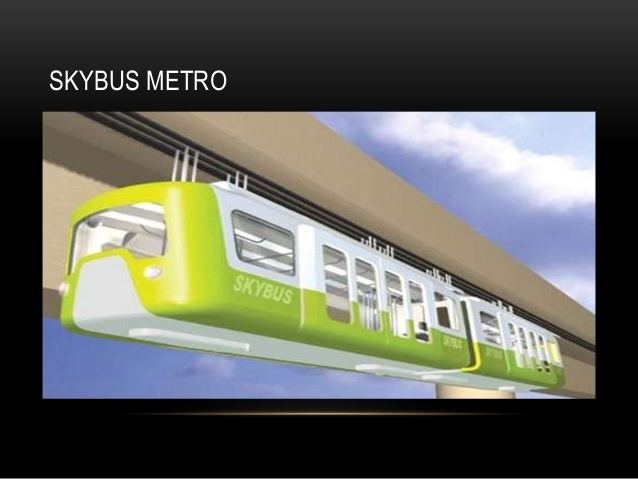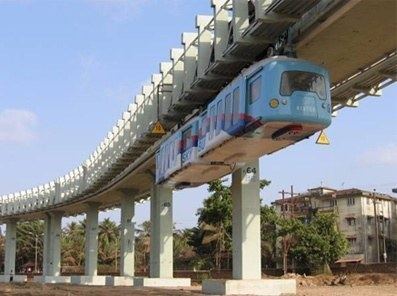 | ||
Skybus metro hyderabad
The Skybus Metro was a prototype suspended railway system invented by Indian technologist B Rajaram with the Konkan Railway. The system consisted of an elevated track with the cars suspended below, similar to the Schwebebahn Wuppertal or H-Bahn systems in Germany.
Contents
- Skybus metro hyderabad
- Iconic madgaon skybus metro track being demolished
- Construction
- Railway
- Bogies
- Coaches
- Traverser
- Station
- Margao test
- References

A 1.6 km (1 mi) test track in Margao, Goa started trials in 2004, but on 25 September, one employee was killed and three injured in an accident when the coaches hit the concrete track pillars. The test track was supposed to be extended to 10.5 km, but no progress has been made since the accident, and the system has not been adopted anywhere else in India. In 2013, the Konkan Railway announced the demolition of the line.

Iconic madgaon skybus metro track being demolished
Construction
Skybus can run at 100 km/h using electric power, with suspended cars that carry the passengers.
Railway

Heavy 52 kilograms per metre (100 lb/yd) rails of standard gauge are placed in 8m x 2m-box enclosures. These rails are supported over 1m diameter columns 10m tall, spaced at 15-20m intervals on pile foundation. This structure is constructed in the divider space between road lanes. Sky Bus follows existing road routes without disturbing traffic.
Bogies
Two standard axle "bogies" provide the drive mechanism. Each bogie is driven by 3-phase alternating current (AC) motor. A third rail provides power. Braking is either regenerative (returning electricity to the grid) with supplemental disc and (emergency) mechanical braking. Power is delivered to the vehicles using brushes or by current carrying wheels.
Coaches
The coaches are double walled lightweight shells with wide larger windows & are suspended below the rails. The air conditioned coaches have 4m-wide automatic doors. They offer audiovisual information to passengers. Each pair of coaches carries 300 passengers. Each coach is 9.25m long and 3.2 m wide. "Trains" consist of two coaches, with total length of 18.5m.
Traverser
The traverser automatically shifts units between tracks. The traverser is a modified form of transverser used in others industries for lifting & shifting objects. In the traverser a platform of track is hung to a bogie which consist of a motor & is also mounted on the track. The traverser acts like a station. A distance of 50m from the last station to the traverser is maintained to provide holding capacity for two units as a third unit is getting traversed in case of unforeseen delay.
Station
The station is an air-conditioned platform 5.5m above ground. Stations have automatic doors and lifts. A smart card opens the station door. The station fits in a 50m long spot.
Margao test
In 2004 the Konkan Railway carried out a test of Sky Bus in Margao, Goa with the help of Goa state government. On 25 September, one employee was killed and three injured in an accident, ending the trial.
In October, 2013 the Konkan Railway Corporation (KRC) decided to discontinue the SkyBus project to curb expenses. The 1.6km test track will be dismantled as a result of the decision. The KRC had solicited interest from foreign firms to maintain and upgrade the test track, this was met with poor response which also contributed to the decision to dismantle.
Managing director Bhanu Prakash Tayal shared that KRC was unable to engineer critical components like the "swing arrestor" and "switching apparatus" which could have potentially addressed the safety concerns that surrounded the project since the 2004 accident.
The track ran 1.6 kilometre (1 mile) The test track was supposed to be extended to 10.5 km. Rajaram defended Sky Bus, stating that the accident was avoidable.
The steepest gradient was 2%. The sharpest curve had a radius of 100m. The maximum radius of vertical curve was 3375m.
